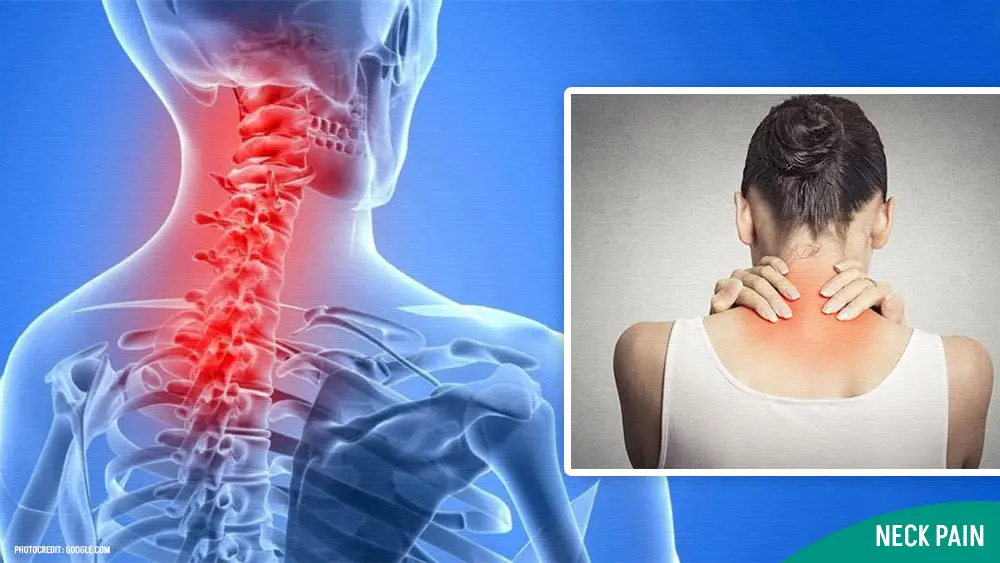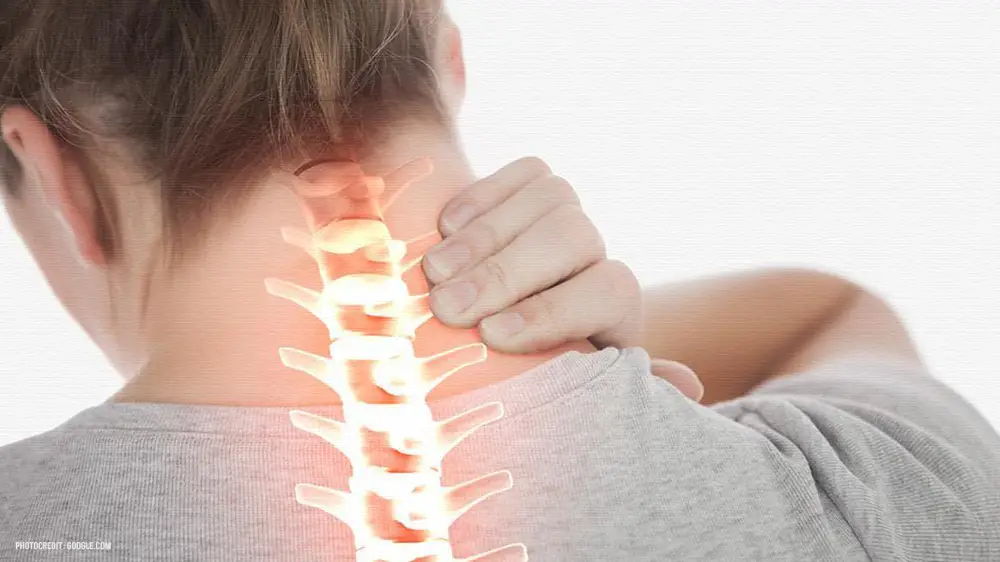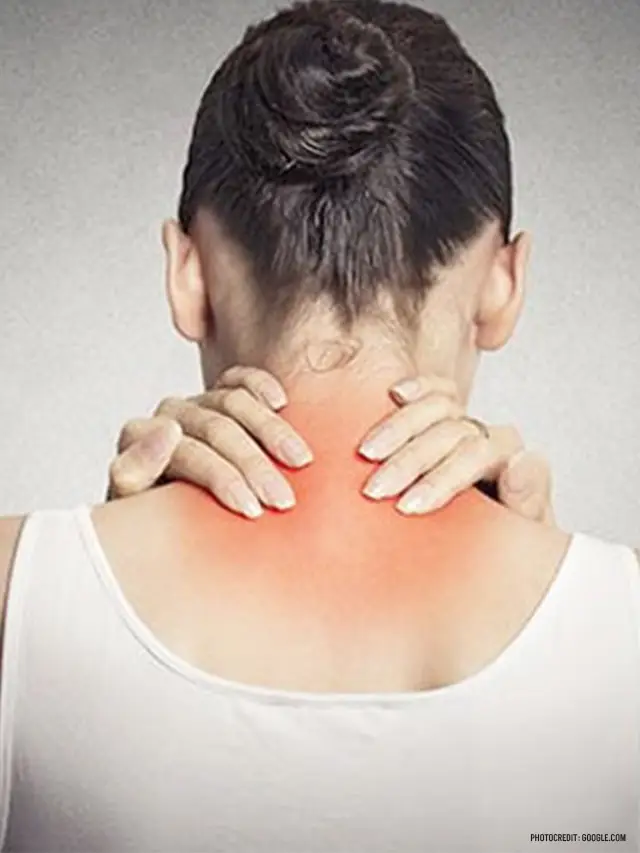
HEALTH BLOG
Neck Pain: Causes, Symptoms, and Natural Treatment
-
 Rahul Priydarss
Rahul Priydarss - April 2, 2024
Learn about the causes, symptoms, and treatment options for neck pain in this comprehensive article. Discover how lifestyle modifications, alternative therapies, and psychological support can help manage chronic neck pain. Gain insights into diagnosing neck pain and understand its impact on different age groups. Explore effective home remedies and alternative therapies alongside conventional treatments for relief.
Introduction of Neck Pain:
Neck pain is a prevalent issue affecting individuals of all ages and backgrounds. The neck, or cervical spine, plays a crucial role in supporting the head and facilitating movement, making any discomfort in this area particularly disruptive. Whether it’s a result of muscle strain, poor posture, injury, or underlying medical conditions, neck pain can range from a mild inconvenience to a debilitating condition, impacting daily activities and overall quality of life.
Understanding the causes, symptoms, and treatment options for neck pain is essential for effectively managing this common ailment and improving one’s well-being.

Table of Contents
Causes of Neck Pain:
Neck pain is a very common problem that can be caused by a variety of factors. Here are some of the most common causes.
Muscle Strain: Overuse, repetitive movements, or poor posture can strain the muscles in the neck, leading to discomfort and stiffness. This is the most common cause of neck pain and is often caused by poor posture, overuse of the neck muscles, or sleeping in an awkward position.
Pinched nerve: A pinched nerve in the neck can cause pain, numbness, and weakness in the neck, shoulders, and arms. This can be caused by a herniated disc, bone spurs, or inflammation.
Trauma or Injury: Accidents, falls, or sudden impacts can cause damage to the structures of the neck, including muscles, ligaments, and vertebrae, resulting in pain and restricted movement. Whiplash, a common neck injury that occurs during a sudden jolt to the head and neck, can cause pain, stiffness, and headaches. Other injuries, such as falls or sports injuries, can also damage the muscles, ligaments, or bones in the neck.
Arthritis Conditions: As people age, the cervical spine may undergo wear and tear, leading to conditions such as osteoarthritis, cervical spondylosis, or degenerative disc disease, which can cause neck pain and stiffness. Osteoarthritis and rheumatoid arthritis can both cause pain and stiffness in the neck. Osteoarthritis is a degenerative joint disease that causes the cartilage in the joints to wear down. Rheumatoid arthritis is an autoimmune disease that causes inflammation in the joints.
Degenerative disc disease: The soft, gel-like material inside the spinal discs can protrude or herniate, pressing on nearby nerves in the neck and causing pain, numbness, or tingling that radiates down the arms. The discs between the vertebrae in the spine can degenerate over time, causing pain and stiffness.
Postural Imbalances: Muscular imbalances, such as tightness in the chest muscles and weakness in the upper back muscles, can pull the neck out of alignment, leading to pain and discomfort.
Medical Conditions: Certain medical conditions, such as fibromyalgia, rheumatoid arthritis, meningitis, or tumors, can manifest with neck pain as a symptom.
Common Symptoms of Neck Pain:
Here are some of the most common symptoms. which are show the effects of neck pain.
Stiffness and Limited Range of Motion:
Individuals experiencing neck pain often report stiffness and a sensation of tightness in the muscles of the neck. This stiffness can restrict the range of motion, making it difficult to turn the head from side to side or to tilt it forward or backward without discomfort. Simple tasks such as checking blind spots while driving or looking over one’s shoulder may become challenging.
Pain:
Neck pain typically presents as a sharp or dull ache in the cervical region. The intensity of the pain can vary from mild to severe, and it may be constant or intermittent. The pain may be localized to one spot or may radiate to other areas, such as the shoulders, upper back, or arms. Certain movements or positions, such as prolonged sitting or standing, may exacerbate the pain.
Headaches:
Neck pain can often be accompanied by headaches, particularly tension headaches. These headaches typically originate from muscle tension in the neck and shoulders and may feel like a dull, squeezing pain that radiates from the base of the skull to the forehead or temples. Individuals may also experience increased sensitivity to light and sound during a headache.
Numbness or Tingling:
Compression or irritation of nerves in the cervical spine can lead to symptoms such as numbness, tingling, or a pins-and-needles sensation that radiates down one or both arms. This sensation, known as radiculopathy or cervical radiculopathy, occurs when the nerves that branch out from the spinal cord become irritated or compressed, often due to herniated discs or bone spurs in the neck.
Muscle Spasms:
In response to injury or irritation, the muscles in the neck may go into spasm, causing sudden, involuntary contractions. Muscle spasms can result in intense pain and stiffness in the neck, making it difficult to move or find relief. Activities that exacerbate muscle spasms, such as lifting heavy objects or sudden neck movements, should be avoided to prevent further discomfort.
Difficulty Sleeping:
Neck pain can interfere with sleep quality and duration, as individuals may struggle to find a comfortable sleeping position. Pain and discomfort in the neck may worsen when lying down, especially if the pillow or mattress does not provide adequate support. Sleep disturbances can exacerbate feelings of fatigue and irritability, further impacting overall well-being.
Pain with Activities:
Certain activities or movements may exacerbate neck pain, such as bending forward, lifting heavy objects, or maintaining a prolonged posture, such as sitting at a desk for extended periods. Individuals may notice that their symptoms worsen during or after engaging in these activities, prompting them to modify their behavior to reduce discomfort.
Shoulder Pain:
Neck pain can sometimes radiate to the shoulders, causing additional discomfort in this area. This referred pain may be sharp or achy and may worsen with certain movements of the arm or shoulder. Individuals may experience difficulty raising their arms overhead or performing activities that require shoulder mobility.
Diagnosis of Neck pain:
Diagnosing neck pain typically involves a two-pronged approach: a thorough medical history and a physical examination. Imaging tests are sometimes used, but usually only after the initial assessment. Here’s of the diagnostic process.
1. Medical History: Your doctor will inquire about your neck pain, including.
- When it started
- Location and nature of the pain (sharp, dull, aching)
- Aggravating and relieving factors (activities, positions)
- Any radiating pain (into shoulders, arms)
- Any recent injuries or accidents
- Medical conditions like arthritis or fibromyalgia
- Current medications
- Work and lifestyle habits (activities that could strain your neck)
2. Physical Examination: Your doctor will examine your neck for.
- Range of motion How far you can comfortably turn, tilt, and bend your neck.
- Tenderness or swelling
- Muscle tightness or spasms
- Neurological signs like weakness, numbness, or tingling in your arms or hands.
3. Imaging Tests (if needed): In some cases, depending on the suspected cause and your doctor’s discretion, imaging tests might be used to get a more detailed picture:
- X-rays: Can reveal bone fractures, arthritis, or bone spurs.
- MRI Scan: Provides a detailed view of bones, soft tissues, discs, and nerves in the neck. Helpful in diagnosing disc herniations, spinal stenosis, or tumors.
- CT Scan: Similar to an X-ray but provides more intricate cross-sectional images. May be used to evaluate bone detail or if MRI is contraindicated (e.g., pacemaker).
4. Diagnostic Injections: Diagnostic injections, such as facet joint injections or nerve blocks, may be used to help identify the specific source of neck pain by temporarily numbing or blocking pain signals from targeted nerves or structures in the cervical spine.
5.Specialized Tests: In certain situations where the cause of neck pain is unclear or if conservative treatments have been ineffective, specialized tests or consultations with other healthcare providers, such as orthopedic specialists, neurologists, or pain management specialists, may be recommended for further evaluation and management.
6. Electromyography (EMG) and Nerve Conduction Studies: Electromyography (EMG) and nerve conduction studies may be performed to assess the electrical activity and function of the muscles and nerves in the neck and upper extremities. These tests can help identify nerve compression or damage that may be contributing to neck pain or related symptoms such as numbness or weakness.
7. Blood Tests: In some cases, blood tests may be ordered to rule out underlying medical conditions that could be causing or contributing to neck pain, such as infections, inflammatory disorders, or autoimmune diseases.
8. Medical History: The diagnosis of neck pain typically begins with a comprehensive medical history. The healthcare provider will ask about the onset and duration of symptoms, any recent injuries or traumas, previous medical conditions, and lifestyle factors that may contribute to neck pain, such as occupation and daily activities.
9. Physical Examination: A thorough physical examination is essential to assess the range of motion, muscle strength, and tenderness in the neck and surrounding areas. The healthcare provider may also perform neurological tests to evaluate sensation, reflexes, and muscle function in the arms and hands.
Treatment Options for Neck Pain:
There’s a good range of treatment options available for neck pain, depending on the severity and underlying cause. Here’s a breakdown of some common approaches.
1.Lifestyle Modifications:
- Posture Correction: Maintaining good posture while sitting, standing, and sleeping can help prevent and alleviate neck pain. Use ergonomic chairs and workstations, adjust computer monitors to eye level, and avoid prolonged periods of sitting or standing in one position.
- Exercise and Stretching: Engaging in regular low-impact exercises such as walking, swimming, or yoga can help improve neck mobility and reduce stiffness. Incorporate gentle neck stretches and range-of-motion exercises into your daily routine to promote flexibility and reduce muscle tension.
- Stress Management: Practice relaxation techniques such as deep breathing, meditation, or mindfulness to reduce stress and tension in the neck and shoulders. Stress management strategies can help prevent muscle tightness and alleviate associated neck pain.
3.Pain Management Interventions:
- Injections: Corticosteroid injections, such as epidural steroid injections or trigger point injections, may be recommended to reduce inflammation and alleviate pain in the neck and surrounding tissues. These injections are typically administered under guidance using fluoroscopy or ultrasound.
- Nerve Blocks: Selective nerve blocks, such as cervical medial branch blocks or facet joint injections, can help identify and target specific nerves or structures in the cervical spine that may be contributing to neck pain. These diagnostic injections can provide temporary pain relief and help guide further treatment decisions.
4.Surgical Interventions:
- Surgery: In cases of severe or persistent neck pain that does not respond to conservative treatments, surgical intervention may be considered as a last resort. Surgical options may include cervical discectomy and fusion, cervical laminectomy, or artificial disc replacement, depending on the underlying cause of neck pain and individual patient factors.

Home Remedies for Neck Pain:
While neck pain often requires professional medical attention, there are several home remedies you can try to find relief alongside following your doctor’s advice. Here are some effective home remedies for neck pain.
Rest and Relaxation: Taking a break from activities that worsen neck pain and allowing the neck muscles to rest can help alleviate discomfort. Avoiding activities that strain the neck, such as heavy lifting or prolonged sitting at a computer, can prevent further aggravation of symptoms.
Heat Therapy: Applying heat to the affected area can help relax tense muscles and improve blood circulation, promoting healing and reducing pain. Apply a heating pad or warm compress wrapped in a towel to your neck for 15-20 minute intervals. Heat helps relax muscles and improve blood flow, promoting healing.
Cold Therapy: Cold therapy can help reduce inflammation and numb pain in the neck. Use an ice pack wrapped in a towel for 15-20 minute intervals, especially during the first few days after injury. Ice helps reduce inflammation and pain. Alternate between heat and ice for optimal effect.
Neck Exercises and Stretches: Gentle neck exercises and stretches can help improve flexibility, reduce muscle tension, and alleviate neck pain. Perform simple neck stretches, such as chin tucks, neck rotations, and side bends, several times a day to loosen tight muscles and increase range of motion.
Ergonomic Adjustments: Make ergonomic adjustments to your workstation and daily activities to reduce strain on the neck. Ensure that your computer monitor is at eye level, use a supportive chair with proper back and neck support, and take frequent breaks to stretch and change positions.
Supportive Pillows: Use a supportive pillow that maintains the natural curvature of the neck while sleeping to prevent stiffness and discomfort. Choose a pillow that provides adequate support for your sleeping position, whether you sleep on your back, side, or stomach.
Over-the-Counter Pain Relievers: Non-prescription pain relievers such as acetaminophen or nonsteroidal anti-inflammatory drugs (NSAIDs) like ibuprofen or naproxen can help alleviate mild to moderate neck pain and reduce inflammation. Follow the recommended dosage instructions and consult with a healthcare professional if you have any underlying medical conditions or are taking other medications.
Stress Reduction Techniques: Stress and tension can exacerbate neck pain. Practice relaxation techniques such as deep breathing, meditation, yoga, or progressive muscle relaxation to reduce stress and promote relaxation of the neck muscles.
Stay Hydrated: Drink plenty of water throughout the day to keep the body hydrated and facilitate proper circulation and muscle function. Dehydration can exacerbate muscle tension and stiffness, contributing to neck pain.
Posture Correction: Maintain good posture while sitting, standing, and walking to prevent strain on the neck muscles. Keep the shoulders relaxed, the head aligned with the spine, and avoid slouching or hunching forward.
Neck Pain in Different Age Groups:
Neck pain can affect people of all ages, but the most common causes tend to shift somewhat depending on age group. Here’s a breakdown of some potential causes of neck pain according to age.
Children and Teenagers:
Muscle strain: Poor posture, especially when using electronic devices for extended periods, can strain neck muscles in younger individuals.
Sleeping positions: Awkward sleeping positions can also contribute to neck pain in children and teens.
Sports injuries: Participation in sports can lead to neck injuries, particularly in contact sports or those involving repetitive motions.
Text neck: The hunched posture often adopted while texting on smartphones can put a strain on the neck muscles in young people.
Young Adults (20s-40s):
Muscle strain: This remains a frequent cause in young adults due to factors like poor posture, work-related activities involving repetitive motions, or sleeping in awkward positions.
Stress: Stress can manifest as muscle tension in the neck and shoulders, leading to pain.
Work-related injuries: Jobs that require prolonged sitting at desks or looking down at screens can contribute to neck pain.
Whiplash: Car accidents are a common cause of whiplash, a neck injury that can occur during a sudden jolt to the head and neck.
Middle-aged Adults (40s-60s):
Degenerative disc disease: As discs between vertebrae in the spine lose water content with age, they become less flexible and more prone to tears, causing neck pain.
Arthritis: Osteoarthritis, a “wear and tear” arthritis, can affect the neck joints, leading to pain and stiffness.
Spinal stenosis: The spinal canal can narrow with age, putting pressure on the spinal cord and nerves, causing neck pain and radiating pain or numbness in the arms and hands.
Older Adults (60+):
All of the above: While the causes mentioned earlier can still be relevant, they become more prevalent as we age. Degenerative changes in the spine and arthritis become increasingly common.
Osteoporosis: This condition weakens bones, and fractures in the cervical spine can cause neck pain.
Psychological Impact of Chronic Neck Pain:
Chronic neck pain can have a significant negative impact on a person’s psychological well-being. Here’s a breakdown of some potential consequences.
Mental Health Issues:
Anxiety and Depression: Chronic pain can be a major source of stress and frustration, which can lead to anxiety and depression. The constant discomfort and limitations caused by neck pain can negatively impact mood and overall well-being.
Sleep Disturbances: Pain can make it difficult to fall asleep or stay asleep, leading to fatigue and irritability. Sleep deprivation can further worsen pain perception and contribute to anxiety and depression.
Fear of Movement: In some cases, people with chronic neck pain may develop a fear of movement due to the association with pain. This can lead to a decrease in physical activity levels and social isolation, further impacting mental health.
Reduced Quality of Life:
Limited Activities: Chronic neck pain can restrict participation in activities you once enjoyed, leading to feelings of frustration, isolation, and a loss of sense of self. Simple tasks like driving, housework, or hobbies may become difficult or impossible.
Work Difficulties: Pain and stiffness in the neck can make it challenging to concentrate and perform work tasks, potentially affecting productivity and job satisfaction.
Social Isolation: The discomfort and limitations caused by neck pain can make social interaction difficult and less enjoyable, leading to feelings of loneliness and isolation.
Impact on Relationships:
Strained Relationships: Chronic pain can strain relationships with family and friends. The constant presence of pain can make it difficult to be patient and engaged with loved ones.
Reduced Intimacy: Pain and discomfort can affect intimacy in romantic relationships.
Cognitive Functioning: Chronic pain can also affect cognitive functioning, including concentration, memory, and decision-making abilities. Individuals may find it challenging to focus on tasks, retain information, or make clear-headed decisions, impacting their productivity and overall functioning.
Fear of Movement: Chronic neck pain can lead to kinesiophobia, or fear of movement, where individuals become apprehensive about engaging in physical activities due to the fear of exacerbating their pain. This fear can lead to avoidance behaviors and further physical deconditioning, perpetuating the cycle of pain and disability.
Loss of Identity: For some individuals, chronic neck pain may challenge their sense of self-identity and self-worth. They may struggle to reconcile their previous capabilities and identity with their current limitations, leading to feelings of loss, frustration, and a sense of diminished self-esteem.
Some Alternative Therapies for Neck Pain:
Alongside conventional treatments like medication and physical therapy, several alternative therapies have shown promise in managing neck pain. Here’s a look at some of the most common ones.
a. Acupuncture: Acupuncture involves the insertion of thin needles into specific points on the body to stimulate nerve endings and promote natural healing. It is believed to help relieve neck pain by reducing muscle tension, improving blood flow, and triggering the release of endorphins, the body’s natural painkillers.
b. Chiropractic Care: Chiropractic treatment focuses on spinal manipulation and adjustments to restore proper alignment of the spine and relieve pressure on nerves. Chiropractors may use manual techniques, such as spinal manipulation and mobilization, along with exercises, stretches, and ergonomic advice to alleviate neck pain and improve function.
c. Massage Therapy: Massage therapy involves the manipulation of soft tissues in the body to reduce muscle tension, improve circulation, and promote relaxation. Techniques such as Swedish massage, deep tissue massage, and myofascial release can help relieve muscle knots, trigger points, and tension in the neck and shoulders, leading to pain relief and improved range of motion.
d. Physical Therapy Modalities: Physical therapists may use various modalities to help alleviate neck pain, including.
- Electrotherapy: Modalities such as transcutaneous electrical nerve stimulation (TENS) or ultrasound therapy can help reduce pain and inflammation in the neck.
- Thermal Therapy: Heat packs, cold packs, or contrast baths may be used to relieve muscle tension, reduce pain, and improve circulation in the neck area.
- Traction: Mechanical or manual traction techniques may be used to gently stretch and decompress the cervical spine, relieving pressure on the nerves and discs and promoting healing.
e. Yoga and Stretching Exercises: Yoga and stretching exercises can help improve flexibility, posture, and muscle strength in the neck and upper back, reducing tension and stiffness. Specific yoga poses and stretches that target the neck and shoulders, such as cat-cow stretch, seated forward bend, and neck rotations, can help alleviate neck pain and promote relaxation.
f. Mind-Body Techniques: Mind-body techniques such as mindfulness meditation, guided imagery, and relaxation exercises can help reduce stress, tension, and emotional distress associated with neck pain. These techniques promote relaxation, improve coping skills, and enhance overall well-being, leading to reduced perception of pain and improved quality of life.
g. Herbal Remedies and Supplements: Some herbal remedies and supplements may have anti-inflammatory or analgesic properties that can help alleviate neck pain. Examples include turmeric, ginger, bromelain, and omega-3 fatty acids. However, it’s essential to consult with a healthcare provider before using any herbal remedies or supplements, especially if you’re taking other medications or have underlying health conditions.
h. Topical Treatments: Topical treatments such as menthol-based creams, capsaicin cream, vergin linseed or arnica gel, spray or roll on may provide temporary relief from neck pain by numbing the area, reducing inflammation, or increasing blood flow to the affected area.
FAQs about Neck Pain:
A1: Yes, stress and anxiety can cause muscle tension and exacerbate existing neck pain. Practicing relaxation techniques and managing stress levels can help alleviate symptoms.
A2: Chiropractic adjustments may provide temporary relief for some individuals with neck pain, but the effectiveness of this treatment can vary. It’s essential to consult with a healthcare professional before pursuing chiropractic care.
A3: While exercise is generally beneficial for neck pain, certain activities like high-impact sports or heavy weightlifting may exacerbate symptoms. It’s advisable to consult with a physical therapist or healthcare provider for personalized exercise recommendations.
A4: In some cases, neck pain may indicate underlying health issues such as cervical spine disorders, nerve compression, or inflammatory diseases. It’s crucial to seek medical evaluation if you experience persistent or severe neck pain.
A5: Ergonomic adjustments such as proper desk height, adjustable chairs, and monitor positioning can promote better posture and reduce strain on the neck and shoulders during prolonged sitting. Employers and employees should prioritize ergonomic workspace design to prevent work-related neck pain.

-Please remember, to always consult with healthcare professionals or Doctors for personalised advice related to medical conditions.
Conclusion:
In summary, neck pain is a common issue with various causes, from muscle strain to degenerative conditions. Diagnosis involves medical history, physical exams, and sometimes imaging tests. Treatment options range from lifestyle changes to alternative therapies and surgical interventions. Psychological impacts like stress and depression can accompany chronic neck pain. Comprehensive care addresses both physical and psychological aspects for improved outcomes. With proper management, individuals can alleviate symptoms and regain quality of life.




